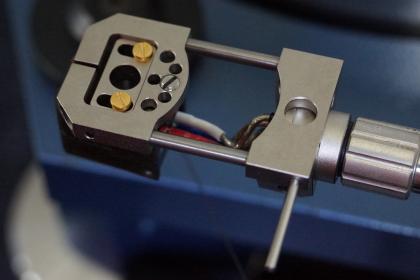Nice shots on this thread! Really. But what are you now doing sitting in front of your wonderful diamond shots, maybe also drawing frames and angles on the print images trying to find out if your SRA is in between 91-92 degrees at best?
Hmm – you may change the tonearm parameters, VTA and VTF of course. But does this really address the issue? –Is this really the right way to adjust the SRA of your cartridge’s stylus?
I thought I really had optimized my geometry approaches to all tonearm and cartridge adjustment issues in the last years.
But how to deal with the SRA issue?
I was discussing this with my friends, “why isn`t there any tool on the market enabling the user to adjust azimuth, offset, overhang and SRA/VTA at the spot - right at the cartridge, without the so far inevitable by-effect of changing the static/dynamic parameters of the tonearm by lowering the tonearm’s base and thus moving the arm pipe away from the theoretical and practical ideal of the static balanced and resting horizontal level”?
And now I found it:
The first Headshell with flexible SRA - without changing the tonearm parameters!!!
View attachment 5405
read more:








